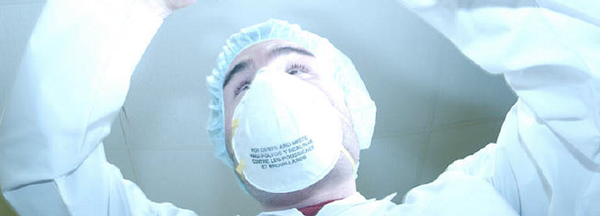- By New York State Governor's Office
- News
 Print
Print 
The Department of Financial Services has issued a new report detailing the successes of New York's first-in-the-nation out-of-network law, which protects consumers from emergency and surprise bills from out-of-network doctors and other healthcare providers, including an increasing number of dispute resolution requests. The law, which takes consumers out of the dispute process, has saved New Yorkers more than $400 million with respect to emergency services alone.
"New York has made extraordinary progress when it comes to enforcing fairness in healthcare costs," Governor Cuomo said. "These findings show how the out-of-network law has been effective in protecting patients and making it clear to everyone that getting the care New Yorkers need is a right, not a luxury."
Department of Financial Services Superintendent Linda A. Lacewell said, "Surprise medical bills have been a huge burden that can stress consumers' finances, literally causing some people to go broke. Our review shows that the law is making a major difference in helping New Yorkers receive the healthcare they deserve without the unnecessary shock and onerous cost of surprise bills and the stress of having to enter disputes themselves."
Under the OON Law, consumers are taken out of disputes over out-of-network emergency and surprise bills, and health plans and providers can use the IDR process to resolve such billing disputes. Consumers are held harmless under the OON Law, which includes other consumer protections including protection from surprise bills, improved disclosure, extended network adequacy requirements, minimum OON coverage to be made available to consumers, expanded external appeal rights, and easier claims submission. Since the law was implemented in 2015, the Department of Financial Services (DFS) has seen a steady increase in the number of Independent Dispute Resolution (IDR) requests filed through its website, as well as decisions on those requests.
Today, health plans typically base out-of-network reimbursements on one of three sources: the FAIR Health Database, an independent nonprofit established by then-Attorney General Cuomo to create transparency in health rates; the Medicare fee schedule; or a set fee established by the health plan. However, there are instances when the health plan reimbursement amount is less than what the provider charges.
Providers, health plans, and certain consumers may submit a dispute to an IDR entity (IDRE) through a portal on the DFS website. In the IDR process, a paper review is conducted, and timely decisions are rendered, on disputes involving bills for emergency physician services or surprise bills. IDR requests are submitted to DFS and assigned to IDR entities certified by DFS for review. The IDR entity makes a determination as to whether the provider's fee or the health plan's payment is more reasonable, based upon the last best offer of each party.
The DFS report issued today found that between 2015 and 2018, a total of 2,595 decisions were rendered, and the number has been steadily increasing, from 149 in 2015 to 1,148 in 2018. The law has saved consumers over $400 million from its March 2015 implementation through the end of 2018, in part through a reduction in costs associated with emergency services and an increased incentive for network participation.
Consumers in need of emergency services are typically unable to choose the physician that provides the services. In addition, even when the consumer receives emergency services at an in-network hospital, the physician may not necessarily be in-network. Prior to the OON Law, there were no protections from excessive emergency charges. Consumers or health plans would just pay the amount billed, and physicians providing emergency services did not have an incentive to participate in health plan networks. By establishing an independent dispute resolution process for out-of-network emergency services, the OON Law reduced out-of-network billing by 34% and lowered in-network emergency physician payments by 9%. Among the results, the DFS report found the following with respect to emergency services:
Of the 2,250 disputes involving bills for emergency services submitted to DFS for IDR during 2015 to 2018, 263 cases were settled, amounting to 12%. 43% of decisions were in favor of the health plan, 24% were in favor of the provider, and 33% were split between the health plan and provider, meaning that more than one CPT code was submitted for the date of service, and the IDRE found in favor of the health plan for some codes and the provider for others.
The most common specialty for disputes involving emergency services in 2015 to 2018 was plastic surgery, followed by emergency medicine and orthopedic surgery. Less common provider specialties included cardiology, neurology, radiology, dental surgery, anesthesiology, assistant surgery, psychiatry, gastroenterology, OB/GYN, urology, and pediatrics, which each accounted for less than 1% of all disputes reviewed through December 31, 2018.
In 2015 to 2018, 1,486 disputes involving surprise bills were submitted to IDR. Of those, 815 IDR decisions were rendered. Health plans prevailed in 13% of the cases, while providers prevailed in 48% of the cases. There were split decisions in 39% of the cases.
The dollar amounts of IDR decisions are most frequently in the $1,000 to $5,000 range, regardless of whether the health plan or the provider prevails.
As awareness continues to increase around this issue, DFS expects the number of IDRs to continue to increase. New York's OON Law has been a true success in bringing stakeholders together to solve the problem of excessive charges for emergency services and surprise bills.
v15i36



